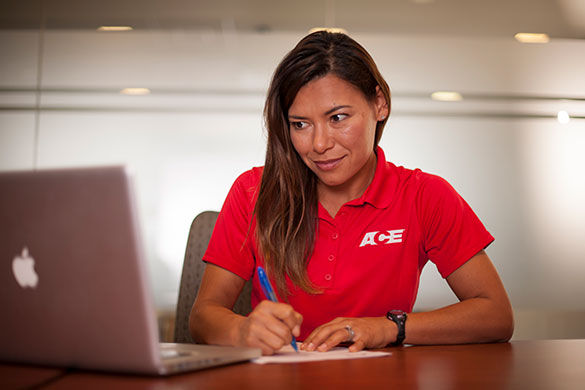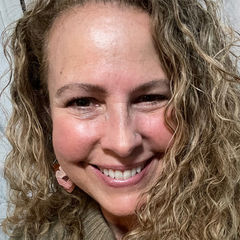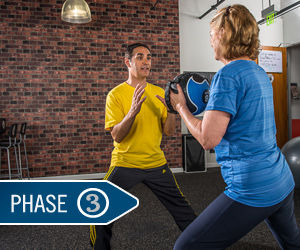
This is the third installment of a three-part series on setting up your health coaching practice.
One of the great advantages of health coaching is that it can really be done anywhere—at a client’s home or your office, for example, or at a park or even online. If you’re just starting out and wondering where to hold your sessions, read on to learn more about the pros and cons of some common coaching-session formats and locations.
Key Points to Remember
- One of the great advantages of health coaching is that it can be done anywhere—at a client’s home or your office, for example, or at a park or even online.
- Given our increasing dependence on electronic communications, there are advantages to being face-to-face with a client without having a screen between the two of you.
- If you’re uncomfortable with in-home coaching, consider renting an office, which puts you in a more public space, possibly creating a safer environment for both you and the client.
- Chances are, anyone you’ll be coaching has a phone; and most of them will have a cell phone, further enhancing the ability to coach them wherever they are.
- The inability to see your client while coaching over the phone, however, makes it impossible to read their body language, so listening to their tone and pacing with them, become even more important.
- Video sessions can be conducted from almost anywhere using a phone, computer or tablet, and offer a slightly more personal feel than simply talking over the phone.
- Regardless of which setting you choose, the most important thing is to try to find something that is comfortable for both you and your clients
In-person
When it comes to being able to pick up on a client’s body language and other clues to their behavior, you can’t beat meeting in person. And, given our increasing dependence on electronic communications, there’s something to be said for being face-to-face with someone without having a screen between the two of you.
“Clients also share that they receive and appreciate the real-life, eye-to-eye contact they may be craving, often as a result of online overload,” says Amy McCann, owner of Amy McCann Coaching.
An obvious obstacle to in-person coaching is the necessity of living close enough to each other to do it. You also need to be comfortable going into people’s homes or having them in yours.
“In-person is not something I offer in general,” says Dawn MacLaughlin, Ph.D., certified Eating Psychology Health Coach and owner of Mind Body Nutrition Coaching. “I only offer it to clients who live really close and whom I know well and am comfortable inviting into my home, as I don’t rent office space.”
Renting office space for in-person coaching can have its perks. If you’re uncomfortable with in-home coaching, renting an office puts you in a more public space, possibly creating a safer environment for both you and the client. This can make both you and your client feel more comfortable, especially if you didn’t know each other prior to working together. You can also write off the expenses on your taxes—rent, phone, Internet, electric—although you can also do this with a home office space.
Another downside to renting office space is that you need the money upfront to pay for it. Plus, many coaches do not have a full line-up of clients, so there is a lot of downtime in the space for which they’re paying. Some coaches remedy this by sharing the space with other coaches or professionals in other fields. Each coach has his or her own set office or appointment times. Of course, this arrangement limits client times to each coach’s allotted times in the office.
“I prefer in-person coaching,” says McCann, “but I no longer offer the initial inquiry in-person coaching session with potential clients. Because I value my time, I only offer a one-on-one, in-person session to local clients and only after they’ve applied and have been accepted into my program. In this way, I am meeting a client who is already committed and who I am confident I want to work with.”
Phone
Chances are, anyone you’ll be coaching has a phone; and most of them will have a cell phone, further enhancing the ability to coach them wherever they are, as long as there is adequate cell service. The inability to see your client removes being able to read their body language, however, so listening to their tone and pacing with them, become even more important. This can help hone your listening skills.
Another challenge to phone coaching is the possibility of distractions on both your and your client’s ends. To help stay focused, both you and your client should be in spaces where as few potential distractions can take place as possible. For instance, I find that it’s best if I am in a room with all technology turned off. I make sure I have a cup of tea or a bottle of water and my notebook and pen so that I don’t need to get any of that in the middle of the session. I also recommend beginning each session with a deep centering breath to help both of you get in tune with each other. You can repeat this step as necessary throughout the session.
Video
The option that potentially offers the best of both worlds is video. You can hold a video session from almost anywhere using a phone, computer or tablet, and it offers a slightly more personal feel than simply talking over the phone. Video also helps decrease the possibility of being distracted, because you can both see each other and will know right away if the other is focusing on something else.
“As a coach, I prefer video,” MacLaughlin says, “because I can read people’s facial expressions and body language.”
MacLaughlin tends to use video for her ongoing clients. “I use an audio/video conferencing system. This allows each of us to connect from whatever phone system or computer system is convenient and avoids us having to negotiate about which phone will be used—home, office, cell. If the client doesn’t want the video portion, then we just use the phone portion.”
There are many available options for holding video-based coaching sessions, including Skype and FaceTime. MacLaughlin uses Free Conference Call and Zoom.
Is Any One Method the Best?
It’s important to remember that while you, as the coach, may prefer one of these methods, you must consider your client’s preferences.
“I certainly have not noticed any difference in effectiveness for any of the methods I use,” mentions MacLaughlin. “The most important thing is to try to find something the client is comfortable using.”
McCann adds, “Clients are typically satisfied with phone- or video-based chat sessions. It makes good business sense for me, with respect to time, convenience and the ability to access online tools from my private home office.”
“No matter what method you use,” MacLaughlin concludes, “relax and listen. Don’t be constantly thinking about what to say next, but just listen. It’s O.K. to say to the client, ‘Let me reflect on that for a second’ or to repeat what they said to make sure you got it. The client wants to be heard and understood.”
And don’t forget the potential healing power of being a good listener. "Trust that simply holding space and allowing the client to express him- or herself freely can be very healing,” says MacLaughlin. “This is something I need to remind myself of frequently."





 by
by 





